Is it good or bad practice auto-generating toString methods for some simple classes?
I was thinking of generating something like below where it takes the variable names and produces a toString method that prints the name followed by its value.
private String name;
private int age;
private double height;
public String toString(){
return String.format("Name: %s Age: %d Height %f", name, age, height);
}


